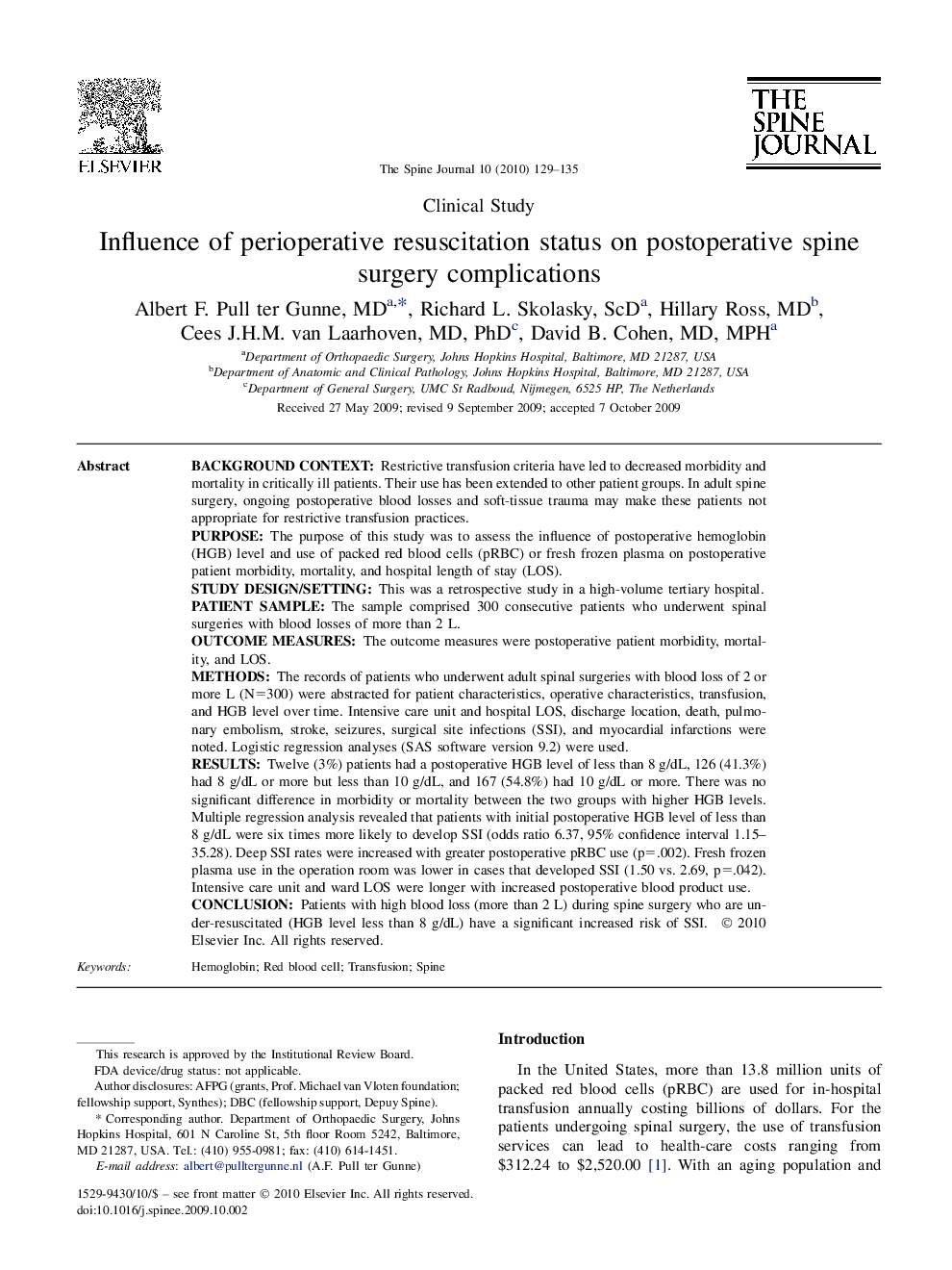| کد مقاله | کد نشریه | سال انتشار | مقاله انگلیسی | نسخه تمام متن |
|---|---|---|---|---|
| 4098773 | 1268624 | 2010 | 7 صفحه PDF | دانلود رایگان |

Background contextRestrictive transfusion criteria have led to decreased morbidity and mortality in critically ill patients. Their use has been extended to other patient groups. In adult spine surgery, ongoing postoperative blood losses and soft-tissue trauma may make these patients not appropriate for restrictive transfusion practices.PurposeThe purpose of this study was to assess the influence of postoperative hemoglobin (HGB) level and use of packed red blood cells (pRBC) or fresh frozen plasma on postoperative patient morbidity, mortality, and hospital length of stay (LOS).Study design/settingThis was a retrospective study in a high-volume tertiary hospital.Patient sampleThe sample comprised 300 consecutive patients who underwent spinal surgeries with blood losses of more than 2 L.Outcome measuresThe outcome measures were postoperative patient morbidity, mortality, and LOS.MethodsThe records of patients who underwent adult spinal surgeries with blood loss of 2 or more L (N=300) were abstracted for patient characteristics, operative characteristics, transfusion, and HGB level over time. Intensive care unit and hospital LOS, discharge location, death, pulmonary embolism, stroke, seizures, surgical site infections (SSI), and myocardial infarctions were noted. Logistic regression analyses (SAS software version 9.2) were used.ResultsTwelve (3%) patients had a postoperative HGB level of less than 8 g/dL, 126 (41.3%) had 8 g/dL or more but less than 10 g/dL, and 167 (54.8%) had 10 g/dL or more. There was no significant difference in morbidity or mortality between the two groups with higher HGB levels. Multiple regression analysis revealed that patients with initial postoperative HGB level of less than 8 g/dL were six times more likely to develop SSI (odds ratio 6.37, 95% confidence interval 1.15–35.28). Deep SSI rates were increased with greater postoperative pRBC use (p=.002). Fresh frozen plasma use in the operation room was lower in cases that developed SSI (1.50 vs. 2.69, p=.042). Intensive care unit and ward LOS were longer with increased postoperative blood product use.ConclusionPatients with high blood loss (more than 2 L) during spine surgery who are under-resuscitated (HGB level less than 8 g/dL) have a significant increased risk of SSI.
Journal: The Spine Journal - Volume 10, Issue 2, February 2010, Pages 129–135